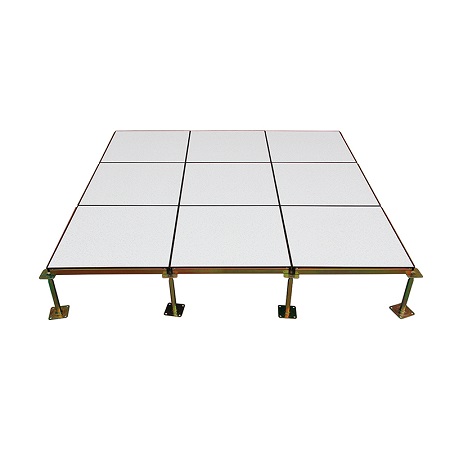Raised floors have become an essential component in various commercial and industrial settings. These elevated flooring systems offer numerous benefits, including improved cable management, enhanced airflow, and flexibility in space utilization. But a crucial question that often arises is: What is the life expectancy of a raised floor?

Factors Affecting Life Expectancy
The life expectancy of a raised floor is influenced by a multitude of factors. One of the primary factors is the quality of materials used. High-quality materials, such as strong metals or durable composites, can significantly extend the lifespan. Installation techniques also play a vital role. A proper and professional installation ensures that the floor is stable and functions optimally. Additionally, the level of usage and the type of environment in which the raised floor is located can impact its durability. Areas with heavy foot traffic or exposure to harsh conditions may cause more wear and tear.
Industry Standards and Expectations
In the construction and flooring industry, there are certain standards and expectations regarding the life expectancy of raised floors. Manufacturers typically provide guidelines and warranties that give an indication of how long the floor should last under normal circumstances. However, it's important to note that these are general estimates and actual lifespan can vary depending on the specific circumstances.
Maintenance and Longevity
Proper maintenance is key to maximizing the life expectancy of a raised floor. Regular cleaning to remove dirt and debris helps prevent damage and deterioration. Inspecting for any signs of wear, such as loose panels or damaged edges, and addressing them promptly can also make a significant difference. Lubricating moving parts and ensuring proper ventilation can further enhance the floor's performance and lifespan.
Case Studies and Real-World Examples
To gain a better understanding of raised floor life expectancy, let's look at some case studies. In a high-tech data center, where the raised floor is subjected to continuous heavy equipment usage, a well-maintained floor lasted for over 15 years. However, in a less demanding office environment, a raised floor with minimal maintenance lasted only around 10 years. These examples highlight the importance of both usage and maintenance in determining the lifespan.
Future Trends and Innovations
As technology and construction methods evolve, so do the prospects for raised floor life expectancy. New materials and designs are being developed that offer even greater durability and performance. Advancements in manufacturing processes may also lead to more reliable and longer-lasting floors. Additionally, the focus on sustainable and eco-friendly solutions could impact the life expectancy of raised floors in the future.
In conclusion, the life expectancy of a raised floor is a complex issue that depends on multiple factors. By understanding these factors, implementing proper maintenance practices, and staying abreast of industry trends, building owners and managers can make informed decisions to ensure the longevity and functionality of their raised floors. The future holds promise for even more durable and sustainable raised floor solutions, which will continue to play an important role in modern construction and facility management.
 May 31, 2024|
May 31, 2024| View:408
View:408


 Product Search
Product Search






